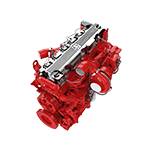Sep . 09, 2024 19:25 Back to list
convert brake drums to disc brakes
Converting Brake Drums to Disc Brakes A Comprehensive Guide
Upgrading your vehicle's braking system from drum brakes to disc brakes can be one of the most effective modifications for improving safety and performance. While drum brakes have been a standard on many vehicles for decades, disc brakes offer several advantages that make them a popular choice for both performance and everyday driving. This article will explore the benefits of such a conversion and provide an overview of the steps involved.
Firstly, one of the primary advantages of disc brakes is their superior performance in heat dissipation. Drum brakes tend to retain heat, which can lead to brake fade—a reduction in braking efficiency due to overheating. Disc brakes, on the other hand, are more effective at dissipating heat due to their exposed design, ensuring consistent performance even under heavy use. This is particularly beneficial for those who drive in demanding conditions, such as mountainous terrains or for those who engage in motorsports.
Converting Brake Drums to Disc Brakes A Comprehensive Guide
Furthermore, disc brakes are generally easier to maintain. The components of a disc brake system are more accessible than those of a drum brake system, making it simpler to replace pads and inspect calipers. As a result, vehicle owners may find themselves spending less time and money on brake maintenance.
convert brake drums to disc brakes

Now, let’s explore the steps involved in converting drum brakes to disc brakes. Begin by gathering the necessary parts, which typically include disc brake rotors, calipers, brake pads, and associated hardware. Depending on your vehicle's make and model, you may also need to acquire new spindles or hubs to accommodate the disc brake components.
Once you have your parts, start the conversion by safely lifting the vehicle and removing the wheels. Next, take off the existing drum brake assemblies, which usually involves unbolting the drums and backing plates. Be cautious, as brake components can be rusty or stuck. After removing the drums, install the new spindles if required, ensuring all associated hardware is tightened to the manufacturer's specifications.
With the new spindles in place, mount the disc brake rotors and calipers. Ensure that the brake lines are compatible and properly fitted. Once everything is installed, bleed the brake lines to remove any air, which can affect braking performance. Finally, recheck all connections and perform a test drive to ensure the new system operates smoothly.
In conclusion, converting brake drums to disc brakes can significantly enhance your vehicle's braking performance and safety. With their superior heat management, stopping power, and easier maintenance, it's no surprise that many car enthusiasts and everyday drivers alike choose this upgrade. If you're considering this conversion, ensure to follow the proper guidelines and, if needed, consult with a professional for assistance.
-
Brake Drum Liza Durable & High-Performance Brake Solutions
NewsMay.29,2025
-
Brake Drum Liza Durable Drum Brake & Shoe Replacement Solutions
NewsMay.29,2025
-
Brake Drum Liza High-Quality Drum Brake & Shoe Solutions
NewsMay.29,2025
-
Brake Drum Liza Durable Drum Brake & Shoe Solutions for Vehicles
NewsMay.29,2025
-
Brake Drum Liza Premium Drum Brake Components & Shoes
NewsMay.29,2025
-
Brake Drum Man Durable Drum Brake Drums & Shoes Supplier
NewsMay.28,2025
